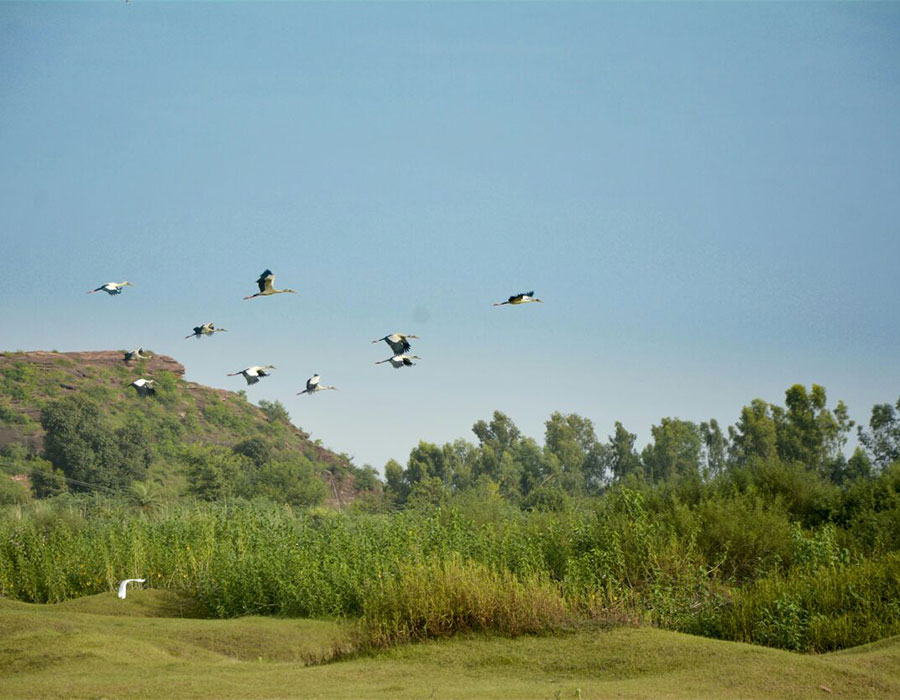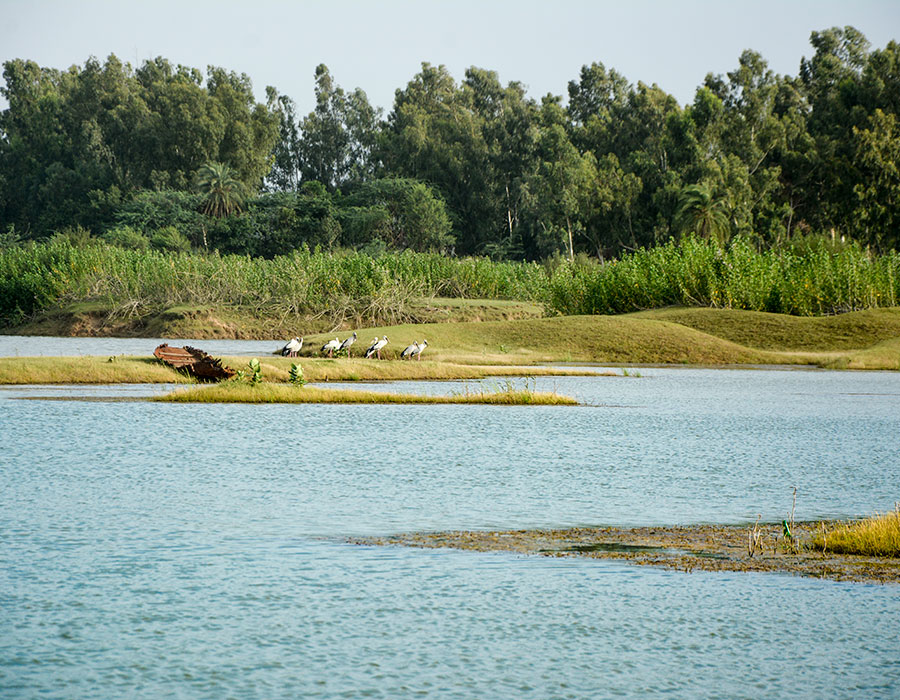Bandh Baretha Wildlife Sanctuary: A Haven for Biodiversity Conservation

Jun 8, 2024
Bandh Baretha Wildlife Sanctuary: A Haven for Biodiversity Conservation
Introduction:
Welcome to the hidden gem of Rajasthan, the Bandh Baretha Wildlife Sanctuary! Nestled amidst the arid landscapes of Rajasthan, the Bandh Baretha Wildlife Sanctuary is a true oasis of biodiversity. With its rich history as the former wildlife reserve of the Bharatpur rulers and its declaration as a protected area in 1985, the sanctuary has been a vital sanctuary for various wildlife species, particularly its avian residents. However, recent developments regarding a proposal to shift the sanctuary southwards for sandstone mining have raised concerns among conservationists and nature lovers. In this blog, we will delve into the unique beauty and significance of Bandh Baretha Wildlife Sanctuary.

1. A Sanctuary for Diverse Wildlife:
Bandh Baretha Wildlife Sanctuary is home to a myriad of wildlife species, both indigenous and migratory. Among the residents, you’ll find the elusive leopard, graceful nilgai, majestic wolves, and the fascinating jungle cat. The sanctuary’s strategic location between the nearby forest area of Bharatpur and the Keoladeo National Park enhances its importance as an essential habitat for a wide range of free-ranging wild animals.

2. Avian Wonderland:
One of the primary attractions of Bandh Baretha is its thriving birdlife. During the winter season, the sanctuary becomes a haven for thousands of migratory waterfowls, offering a mesmerizing spectacle for birdwatchers. Keep your eyes peeled for the striking Black Bittern, the elegant Bar-headed Geese, the Grey Leg Geese, and a plethora of other avian visitors who travel great distances to roost in this serene wetland.

3. Ecological Significance:
Beyond its role as a wildlife sanctuary, Bandh Baretha plays a crucial ecological role in the region. It contributes significantly to the catchments of Chambal River, providing essential water resources for the surrounding areas. The dry mixed deciduous forests within the sanctuary harbor a treasure trove of medicinal plants and diverse flora and fauna, contributing to the ecological security and improved environment of Eastern Rajasthan and Western Madhya Pradesh.

4. Conservation Challenges:
While Bandh Baretha Wildlife Sanctuary is a sanctuary of immense value, it faces threats that jeopardize its delicate ecosystem. The proposal to shift the sanctuary southwards for sandstone mining raises concerns about habitat destruction and the potential displacement of wildlife. Conservation efforts must focus on striking a balance between economic development and the preservation of this precious biodiversity hotspot.

5. Coexistence with Local Communities:
Bandh Baretha is not just a sanctuary; it is a lifeline for many neighboring villages whose inhabitants depend on the forest for their livelihoods. Conservation initiatives should incorporate sustainable practices that empower local communities while ensuring the protection of the sanctuary’s natural resources.
Conclusion:
Bandh Baretha Wildlife Sanctuary stands as a testament to the beauty and biodiversity that Rajasthan has to offer. Its thriving ecosystem, diverse wildlife, and avian wonders make it a sanctuary of utmost importance for both conservationists and nature enthusiasts. As responsible travelers and citizens, let us join hands to preserve and protect this ecological treasure for generations to come. So, the next time you plan a trip to Rajasthan, make sure to include Bandh Baretha in your itinerary for an unforgettable wildlife experience!

